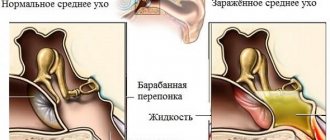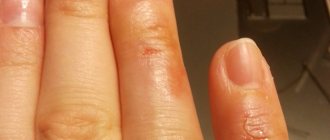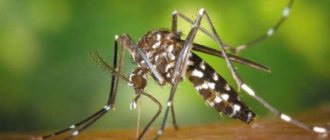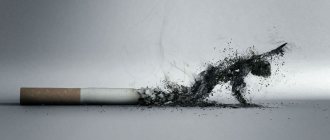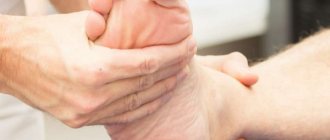Symptoms of lichen
What are the features and symptoms of pityriasis versicolor? After the onset of the lesion, small redness appears on the surface of the skin. The spots are clearly defined. They have a yellow, pink tint.
Over time, the spots turn brown. Affects the back, stomach, chest. May appear on the neck. The incubation period can last two months. Disturbs the production of skin pigment.
Causes of the disease
It occurs as a result of increased sweating, hormonal imbalance, and low immunity. Wearing tight clothes made of artificial fabric can also cause it, as the body stops breathing.
The causes of the appearance of versicolor in humans may be chronic diseases that provoke its onset.
High blood sugar, throat and lung diseases, diseases of the genitourinary system and liver, disruptions in the gastrointestinal tract, AIDS can be companions to the resulting skin lesions.
Pathogen
The causative agent of pityriasis versicolor is the opportunistic fungus Malassezia furfur. It lives on the skin of 90% of healthy people as part of normal microflora in the form of inactive spores. Protective epidermal factors prevent the germination of spores, however, a decrease in their activity leads to the appearance of a vegetative form of the fungus - mycelium.
The protective reaction of the epithelium to the introduction of the fungus is the increased proliferation of cells in the basal layer. The renewal of the epidermis occurs more intensively in order to remove the pathogen from the body along with the horny scales.
Immune cells react poorly to the fungus, since they are accustomed to its constant presence on the skin surface in the form of inactive spores. Immune defense is mediated only by humoral factors - blood proteins, which leads to the development of inflammation in the epidermis, similar to an allergic reaction. It is often ineffective and without treatment the disease lasts for years and often recurs.
The pathogenic form of the fungus is practically not contagious, but can be dangerous for people with reduced immunity: pregnant women, elderly, weakened children. How is the causative agent of lichen versicolor transmitted? Infection is possible when:
- close physical contact with a sick person;
- sharing bedding and underwear;
- using common personal hygiene items (washcloth, towel).
Diagnosis of lichen
A dermatologist will be able to make the correct diagnosis when examining the patient. A laboratory analysis of scrapings will reveal the type of fungus.
Fluorescent lamps are used: their light changes the color of the affected areas to green, yellow or brown. To confirm, the method of applying iodine is used; fungal rashes become pronounced.
The necessary tests will ensure that they are not confused with other species. In the photo of a patient with pityriasis versicolor in the stage of severe damage, a similarity with the disease vitiligo can be seen.
A visit to the doctor is necessary
Pityriasis versicolor is a fungal disease that develops against a background of decreased immunity. Therefore, despite the fact that it is non-contagious and mainly causes only a cosmetic defect, it is still necessary to see a doctor. The specialist will not only recommend the most effective set of remedies to combat ringworm, but will also find out the cause of the immune system failure and prescribe the appropriate treatment, or adjust the current therapy (for example, cancel some medications, or replace them with less aggressive ones).
Making a diagnosis for a doctor does not present any difficulties. For an experienced dermatologist, one look at the skin is enough to determine the type of lichen. But in order to dismiss any doubts, doctors usually conduct the following studies:
- A skin scraping is taken to examine under a microscope and determine the type of fungus.
- The skin is examined using a special device called a Wood's lamp.
By the way, Wood's lamps are available for free sale , and they are recommended for all pet owners to independently monitor fungal skin lesions at the earliest stages. The examination does not pose any danger and does not cause discomfort (but should be carried out with caution during pregnancy). In the rays of this lamp, skin affected by fungus appears yellow-green.
The set and dosage of drugs prescribed by the doctor depend on the following factors:
- location of lichen spots on the body;
- total affected area;
- size and condition of spots;
- patient's age;
- the climate in which the patient permanently resides.
Treatment of deprivation
The use of medicinal treatment will help to quickly and easily cure pityriasis versicolor. Drugs are used that suppress the activity of fungi. A wide range of ointments are used. Terbinafine is rubbed into the skin for several weeks. Bifonazole is applied once a day until complete healing. Clotrimazole is used, which treats and removes redness.
In some cases, treat the surface with salicylic alcohol or use ointments containing sulfur. In addition to the use of medications, the use of traditional methods of treating lichen versicolor is also indicated.
Treatment must be coordinated with the attending physician so as not to cause a recurrence of the disease. This method is especially indicated in cases of intolerance to certain medications.
What is best to use to treat lichen versicolor? During treatment, an acidic environment is maintained, since the fungus dies in it. The skin is wiped with cranberry and lemon juice.
Use St. John's wort oil, tincture of calendula flowers, and onion juice.
Make compresses from sorrel. For wiping, use vinegar and honey. Lotions with garlic, mint, and celandine will help.
Take baths with sea salt and tansy and wormwood herbs before bed. Pine needle extract is added to the bath. They help eliminate flaking and kill fungus.
Traditional medicine in the fight against pityriasis versicolor
It is recommended to combine medications for the treatment of tinea versicolor with folk remedies:
- lubricate the affected areas with a solution of boric acid. To do this, add 10 grams of boric acid to a glass of boiling water. The skin must be regularly wiped with the resulting solution;
- you can alternate treatment with boric acid solution and onion lotion;
- apply lotions from celandine infusion, pour a tablespoon of finely chopped celandine stems into 400 milliliters of boiling water, let it brew for a quarter of an hour, apply to the affected areas. This remedy can be called the most effective against ringworm.


